The Benefits of a Vertical Garden
A vertical garden or living wall consists of small plants grown on a wall or structure, providing greenery in urban living spaces.
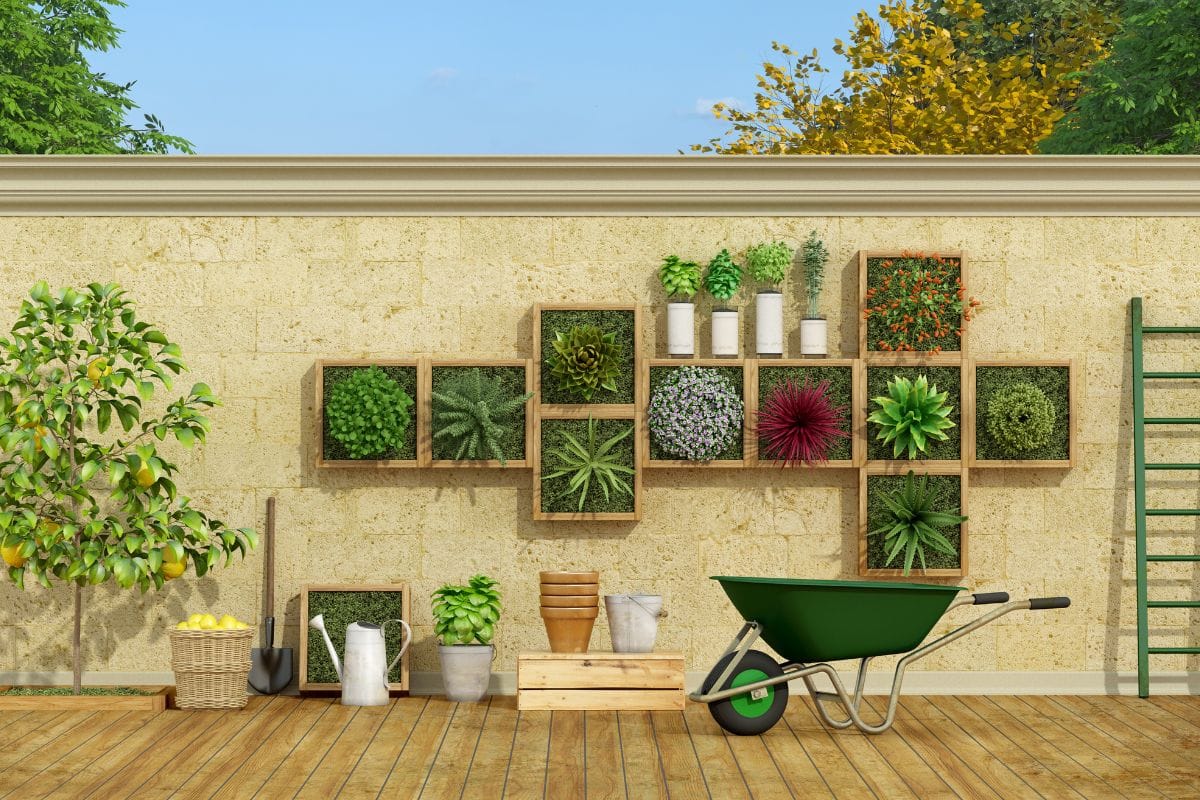
Small indoor or outdoor plants that are grown on a fixed wall or a freestanding vertical structure is known as a vertical garden or a living wall. Studies show that by 2050, almost 80 percent of the world’s population will be living in urban centers. As cities have become more crowded and we depend a lot more on apartment living already, most of us don’t have access to garden space or just any greenery in this urban jungle.
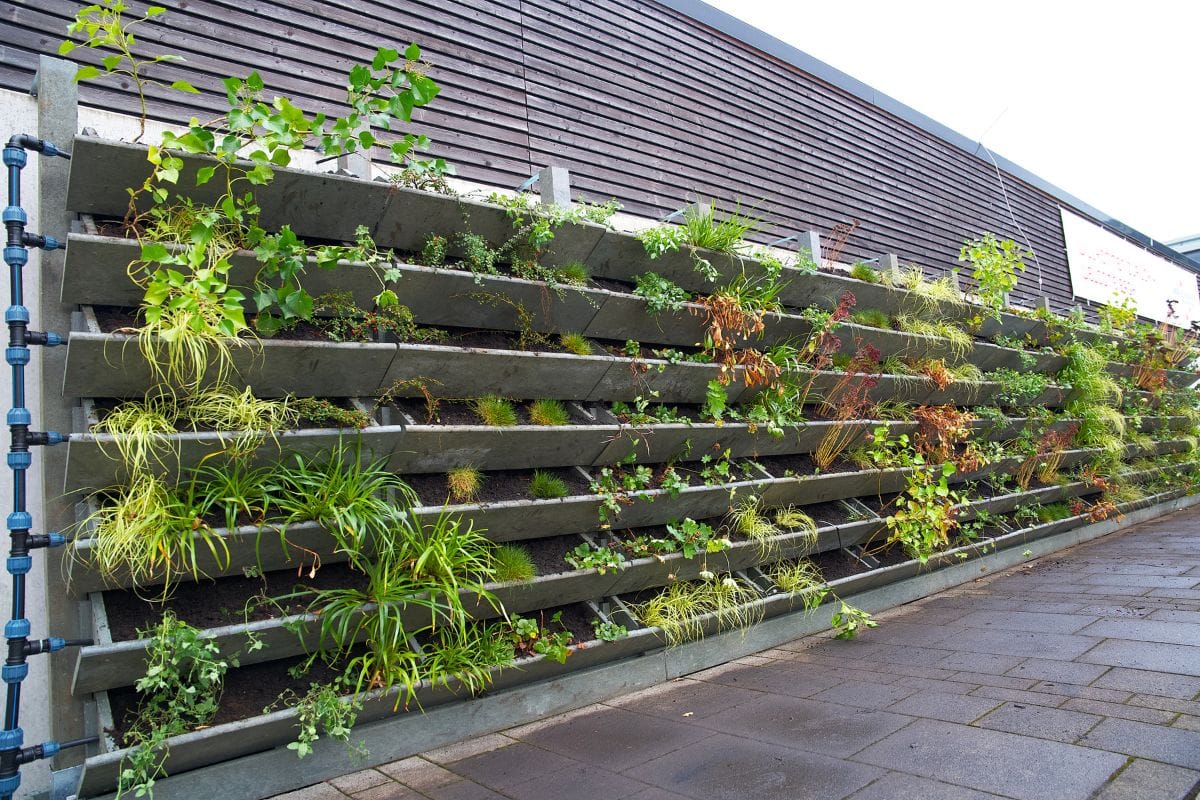
With our love of gardening fading away due to the limited space in high-rise apartments and flats, the innovative development of urban gardens including rooftop farms, balcony her gardens, and vertical gardens within the city has become popular. The aesthetic, physiological, economical, and environmental benefits of vertical gardens have become a brilliant solution for the decreasing space available for gardening in the cities. In case you are still not convinced, here are the benefits of vertical gardens.
1. Maximize Limited Space Available
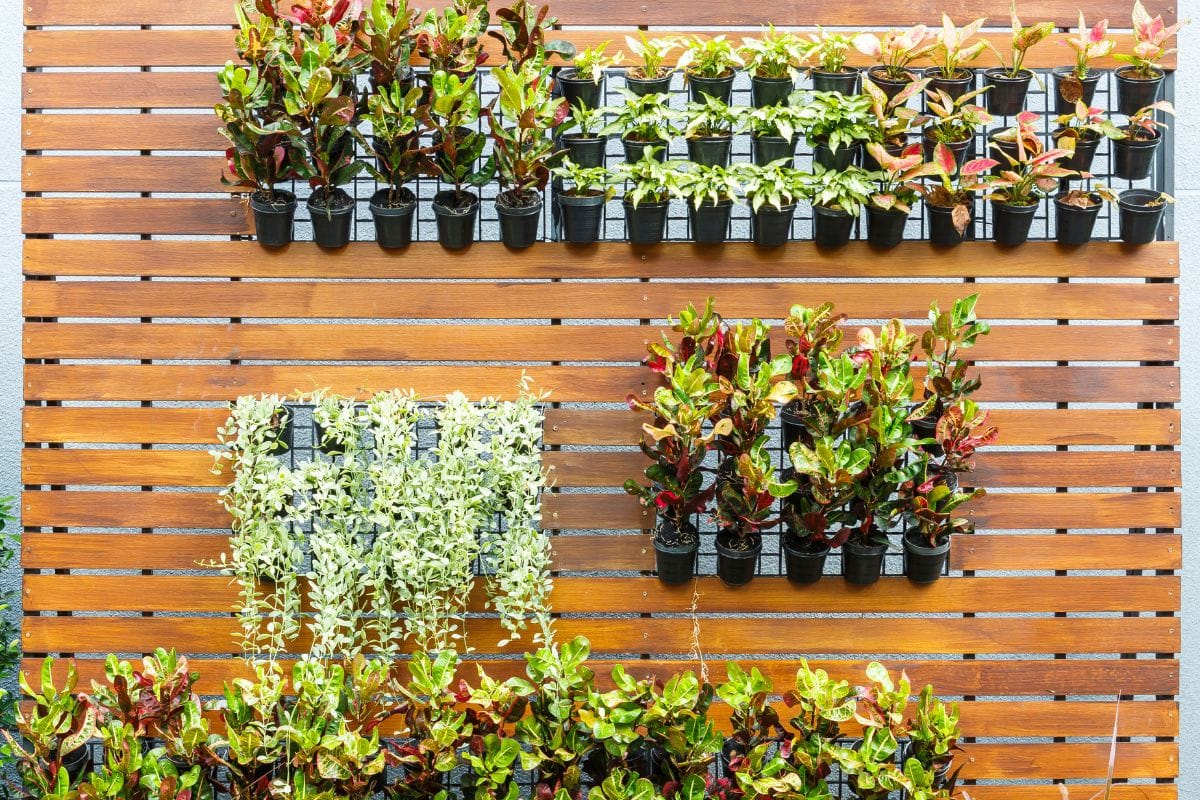
As we already explained in detail, people living in urban areas do not have outdoor spaces large enough for a garden because of the high-rising apartments, a limited wall area like a balcony wall, indoor wall, and backyard wall (if you have access to one) that can be used to create a vertical garden is a gift.
As a vertical garden uses only a very limited space for planting, you can have piles of plants vertically arranged one by one or hanging one above the other.
2. Helps to Control Sound Pollution
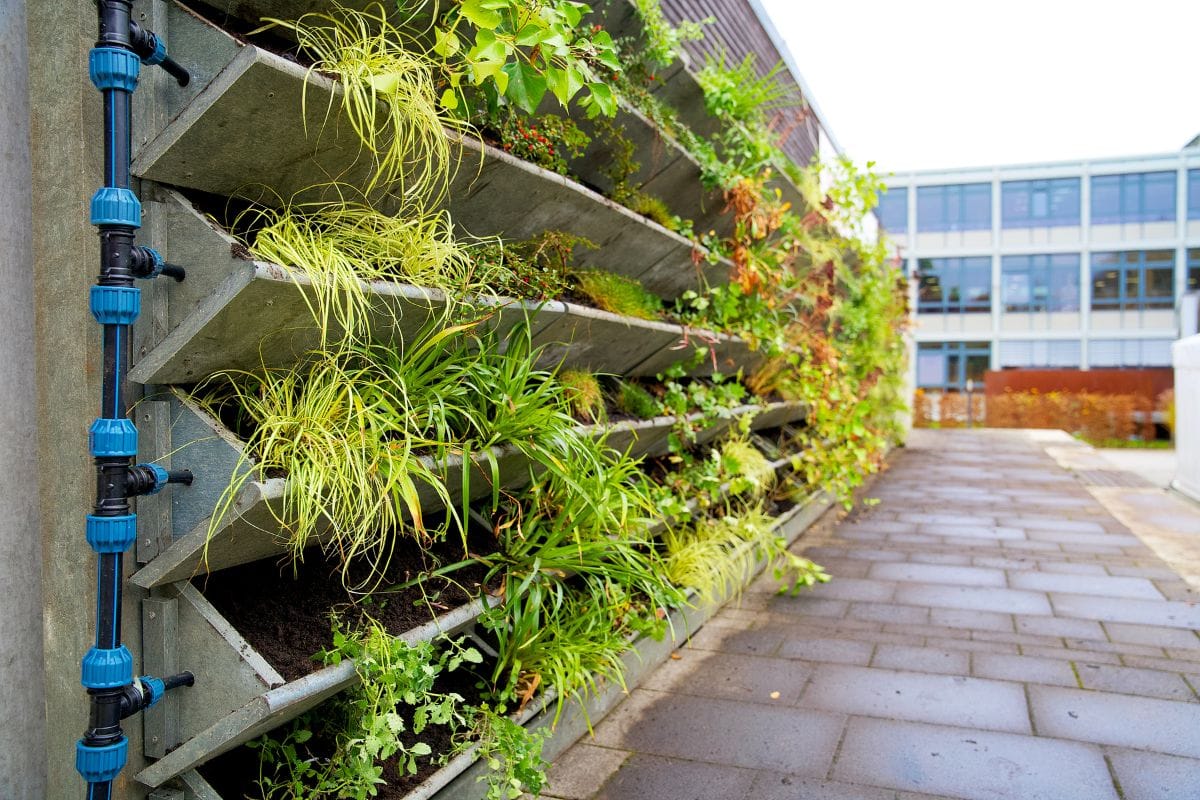
The increasing sound pollution in cities is a headache for most people. A good way to counter this is by incorporating a vertical garden as they help in blocking low-frequency noise and helps in reducing noise pollution. A quieter home is a happy home.
3. Acts as an Air Purifier

We know that plants absorb pollutants and harmful VOCs and toxins such as carbon monoxide, benzene, trichloroethylene, and formaldehyde. Growing plants vertically in a compact way gives you a purer environment to breathe in by acting as a protective barrier against these pollutants while absorbing them.
4. It's Aesthetically Pleasing
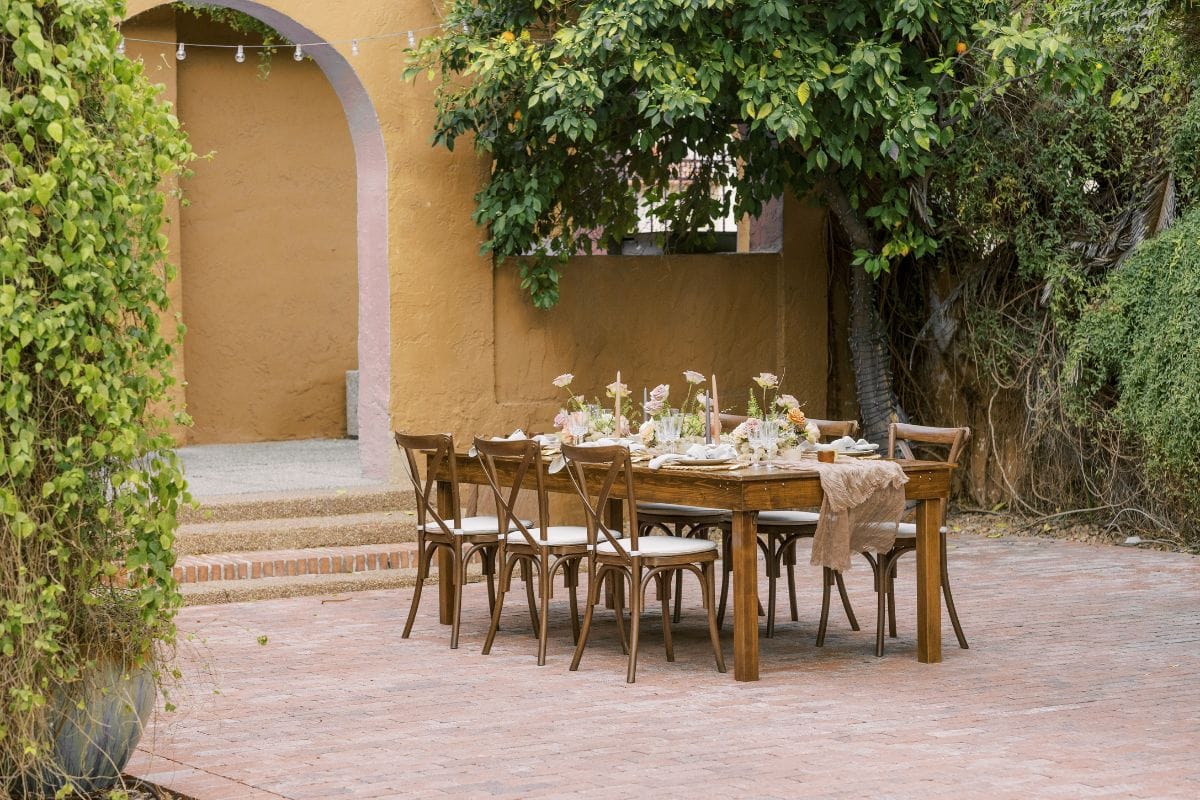
It’s evident that vertical gardens create a stunning focal point in your garden from these photos. What makes vertical gardens so good is that it adds a lot of color into a single wall and makes it look so good. You can have a lot of different colored plants or just a few depending on your tastes.
You can also plant them in various designs according to your ideas. We at HomeTriangle love a clean and clutter-free look to not trigger our OCD.
5. Helps Control Indoor Temperature
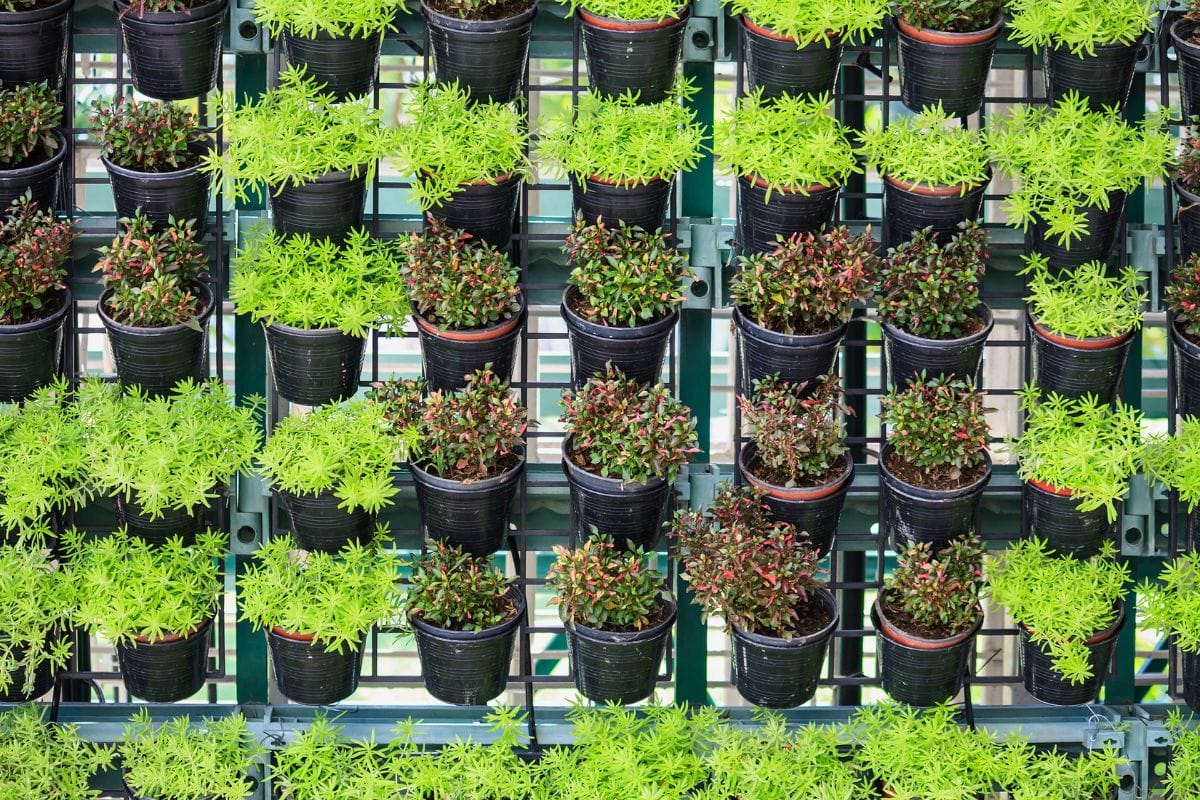
Plants use only about 2 percent of the water taken up by the roots for its growth and metabolism. The rest of the water is lost through transpiration and guttation. This whole process helps in reducing the surrounding temperature. A vertical garden absorbs heat and UV rays and creates a shaded area within the home.
6. Easy Maintenance
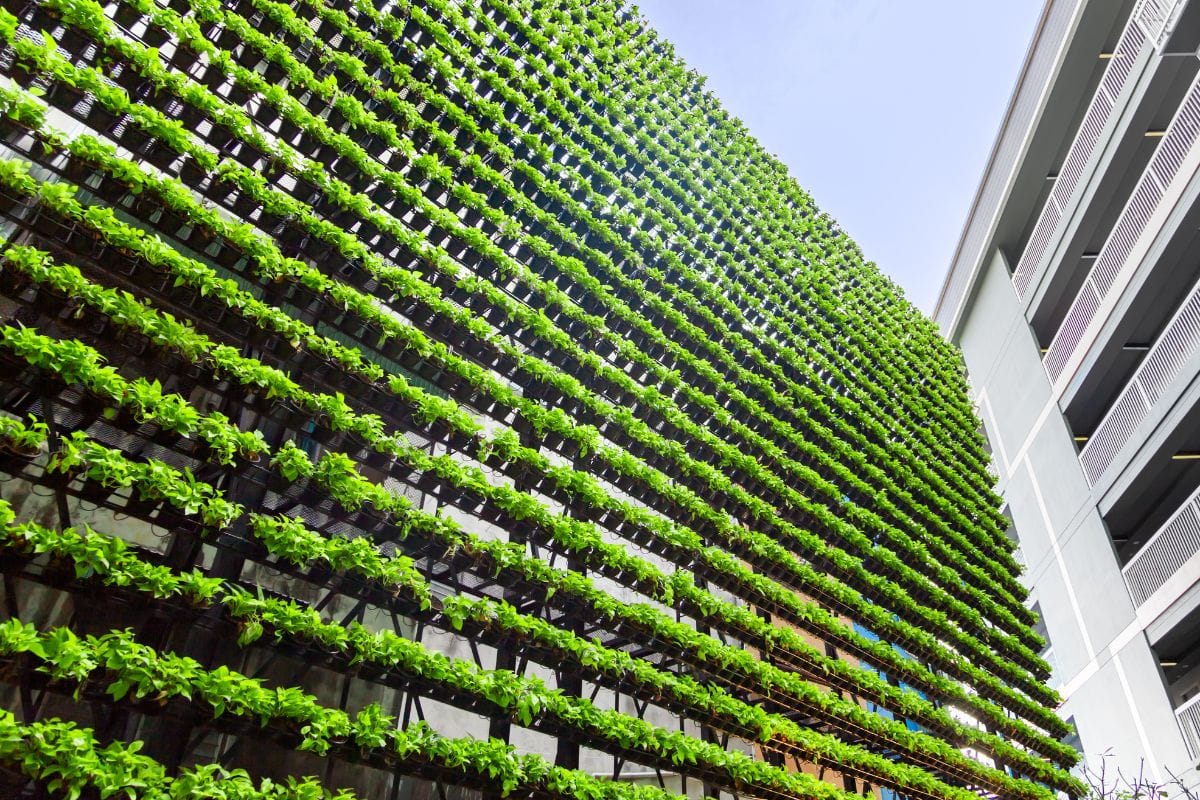
Since the plants are grown verticals, the damages caused by pets and other animals are minimum. They are also easy to fertilize, water, and prune due to the convenient vertical placement of them meaning there’s only one large panel to maintain.
You should be careful not to create a vertical garden on a brick wall as the walls might get vulnerable to dampness when the water drips. Natural stone, porcelain tile cladding, and concrete are a better option because they are almost impervious to moisture.
7. Reduce the Carbon Footprint
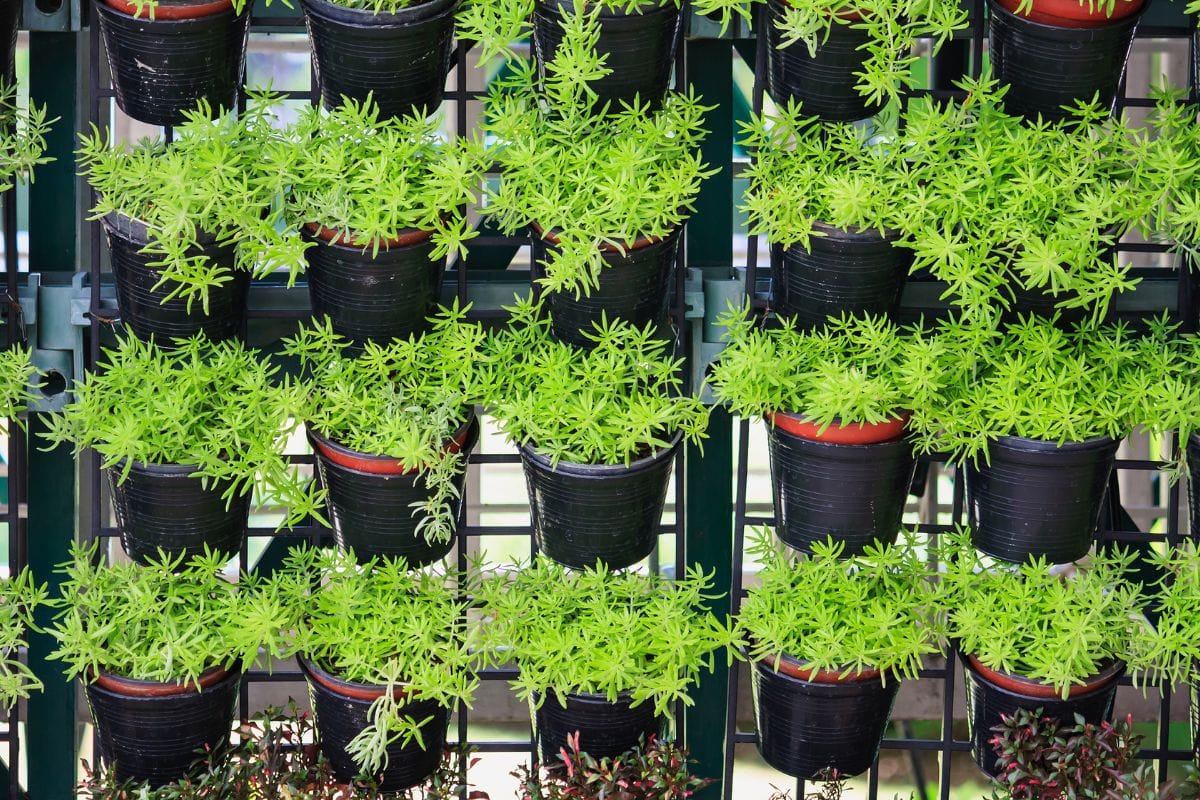
Vertical gardens or any gardens at all reduce the amount of carbon in the atmosphere when they absorb carbon dioxide and release oxygen. Although it couldn’t really make a noticeable difference, having gardens will teach the next generation of the importance of them and that is important. After all, climate change is real, and do what we can, right?If you’re planning to have a herb garden in your home, read Grow Medicinal Herbs in your Kitchen or Patio to know more about it.


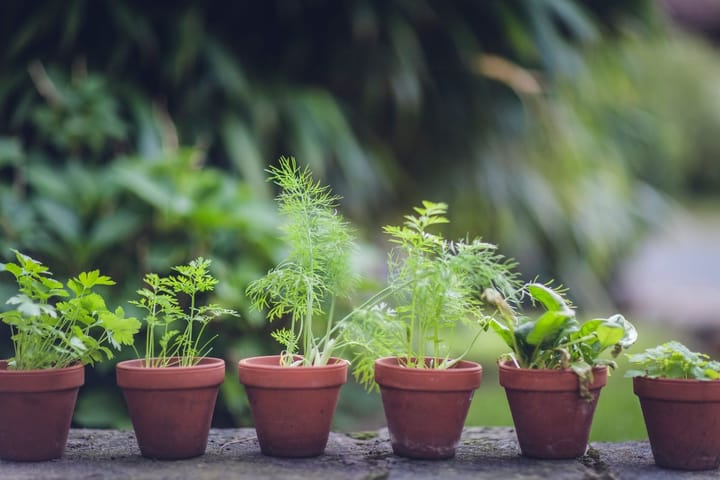
Comments ()